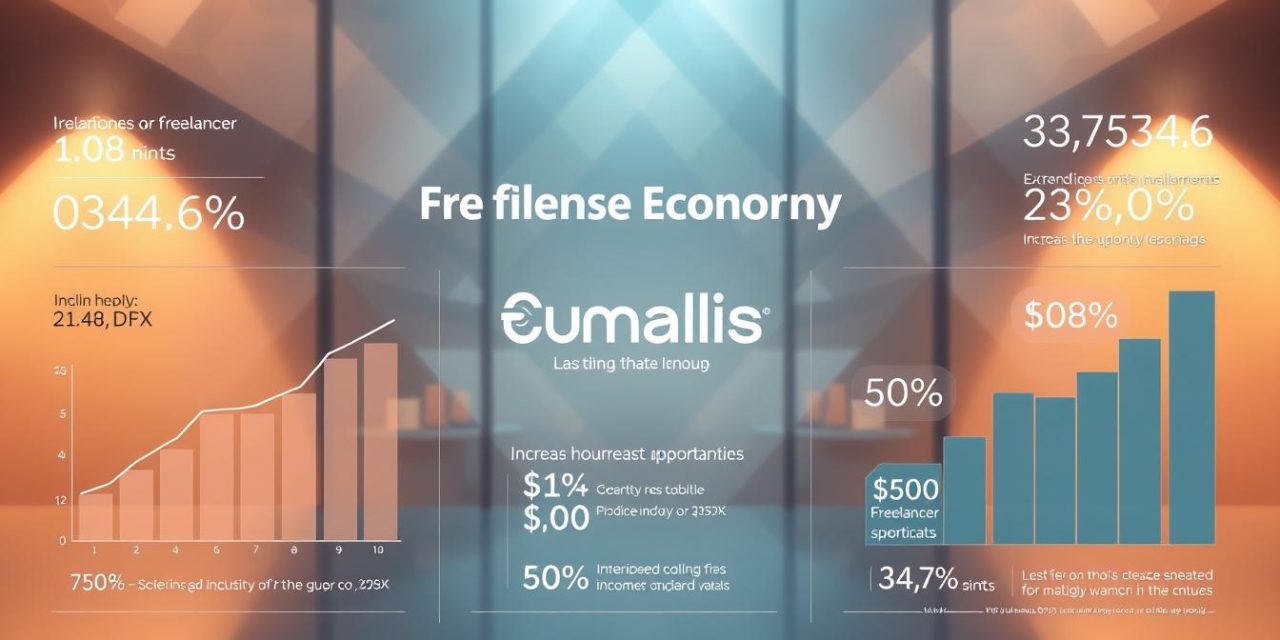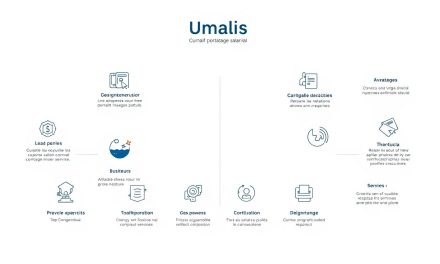Did you know that 59 million Americans now earn income through flexible work arrangements? That’s 36% of the workforce—a figure projected to surpass 50% by 2025. This seismic shift isn’t just reshaping careers; it’s redefining how businesses operate globally. By 2024, this sector is expected to reach a staggering $556 billion valuation, proving it’s far more than a passing phase.
What began as side hustles has evolved into a primary career path for millions. Professionals now prioritize autonomy over traditional office structures, leveraging project-based opportunities to craft fulfilling careers. 86% of independent workers believe their best opportunities lie ahead, reflecting growing confidence in this model’s longevity.
Success in this landscape requires more than technical skills. Strategic navigation of market demands, client relationships, and personal branding separates thriving professionals from those struggling to adapt. Our analysis combines industry expertise with actionable data to help you build sustainable independence.
Table of Contents
Key Takeaways
- Flexible work models will dominate 50% of U.S. employment by 2025
- The sector’s $556 billion valuation signals long-term viability
- 86% of professionals anticipate better opportunities ahead
- Career success requires strategic market positioning
- Continuous adaptation is essential in evolving work landscapes
Overview of the Gig Economy Landscape
Modern professionals increasingly choose project-based arrangements over traditional roles. This shift reflects a fundamental reimagining of career paths, where 70% of self-employed individuals actively prefer their flexible status. Let’s explore how this sector operates and where opportunities thrive.
Defining Short-Term Work Models
Independent professionals operate through various structures. Traditional freelancing now coexists with app-based services and specialized consulting. Key differences separate contractors from employees:
| Factor | Independent Contractors | Traditional Employees |
|---|---|---|
| Work Control | Choose projects & schedules | Fixed hours & assignments |
| Benefits | Self-managed | Employer-provided |
| Tax Responsibility | Personal filings | Employer withholdings |
Regional Opportunities and Expansion
Digital platforms erase geographical barriers, creating a $1.5 trillion global marketplace. While North America leads in high-value projects, emerging markets offer distinct advantages:
« Platforms let me collaborate with European clients while based in Jakarta – something unimaginable a decade ago. »
- India: Rapid tech sector growth
- Brazil: Creative services demand
- Australia: Premium consulting rates
This borderless environment allows skilled workers to strategically position themselves across markets. With 12% of global employment now project-based, adaptability becomes crucial for sustained success.
Gig Economy Trends: A Data-Driven Analysis
Numbers reveal what headlines often miss. While transportation services still drive 58% of sector revenue, skilled professionals now dominate workforce expansion. This pivot reflects evolving priorities among both workers and clients.
Key Statistics and Revenue Streams
Today’s opportunities extend far beyond ride-sharing apps. Half of all independent professionals now offer specialized services like IT solutions or marketing strategy. High-value expertise accounts for 50% of global freelance activity, creating premium earning potential.
Dual participation patterns emerge clearly in the data. While 56% use project work to supplement primary income, a growing cohort treats it as their main career path. This flexibility lets workers tailor their approach to personal financial objectives.
Historical Growth and Future Projections
The sector’s 15% annual growth trajectory through 2026 signals lasting transformation. Early dominance by temporary labor platforms has given way to sophisticated knowledge-based markets. Technology consultants and financial analysts now lead demand spikes across Europe and Asia.
Strategic positioning requires understanding these shifts. Professionals who track emerging sectors like AI integration or sustainability reporting secure 23% higher rates on average. Continuous skill adaptation remains the cornerstone of durable success.
Demographics and Earnings in Gig Work
Age and expertise shape modern career paths in ways that defy traditional employment patterns. While younger professionals flood project-based markets, seasoned specialists prove experience directly fuels earning power. This dynamic creates opportunities for workers at every career stage.
Freelancer Profiles and Age Distribution
Three-quarters of independent professionals are under 35, with 21% starting before age 25. However, mature workers demonstrate lasting value – those aged 55-64 earn $36/hour compared to the global average of $21. This 71% premium rewards niche expertise and client trust.
Earnings, Rates, and Financial Insights
Full-time professionals outpace traditional salaries, averaging $69,000 annually. Top performers shatter expectations: 20% clear six figures through strategic client partnerships. As one financial consultant notes: « Specialized skills let me charge premium rates while working fewer hours. »
Regional variations matter, but smart positioning trumps geography. Many gig workers using strategies for sustainable independent careers achieve earnings growth regardless of location. Regular rate reviews ensure your pricing reflects evolving market value.
Technology and Automation Impacting Gig Work

Smart algorithms now decide 43% of project matches in tech-driven markets. This transformation extends beyond basic job boards, with AI-powered platforms analyzing thousands of data points to connect specialists with ideal opportunities. Professionals skilled in emerging technologies command 22% higher rates than traditional counterparts.
AI and Digital Platform Innovations
Generative AI created 600% more specialized roles in 2023 alone. Modern systems evaluate portfolios, communication patterns, and past project success to make precision matches. One UX designer reports: « Platforms now suggest projects aligning with my niche faster than I could search manually. »
Leading digital platforms now handle entire project cycles. From contract signing to payment processing, integrated tools reduce administrative tasks by 40%. This shift lets professionals focus on high-value work while maintaining multiple client relationships.
Automation’s Role in Project Efficiency
Advanced tools enable solo workers to manage enterprise-level deliverables. Content creators using AI assistants produce 58% more output without quality loss. Automated quality checks and deadline trackers help maintain client trust across time zones.
To stay competitive, adopt strategic approaches combining technical proficiency with platform mastery. Regularly update your skill set to match evolving market needs—73% of top earners complete quarterly tech training.
Benefits and Challenges for Gig Workers
Modern work structures offer unprecedented control over professional lives. Over 8 in 10 self-employed individuals report higher lifestyle satisfaction compared to traditional employees. This freedom comes with unique considerations requiring strategic planning.
Freedom That Fuels Success
Schedule autonomy drives career choices for 63% of project-based workers. Unlike office-bound roles, professionals can:
- Design work around personal priorities
- Choose clients aligning with values
- Adjust workloads during life changes
« Working sunrise hours lets me coach my daughter’s soccer team – that balance matters more than a corner office, » shares Mark T., a web developer.
Building Security in Flexible Careers
While 4 in 10 lack employer-sponsored health coverage, solutions exist. Smart professionals combine multiple income streams with specialized insurance plans. Consider these protective measures:
| Factor | Advantage | Consideration |
|---|---|---|
| Schedule Control | Choose optimal working hours | Irregular income patterns |
| Income Potential | Uncapped earning opportunities | Self-managed tax payments |
| Benefits Access | Customized coverage options | Higher personal costs |
Three strategies help maintain stability:
- Diversify clients across industries
- Allocate 25% income for emergencies
- Use professional collectives for group rates
Balancing flexibility with safeguards creates sustainable careers. Regular skills upgrades and financial planning turn challenges into growth opportunities.
Effective Strategies for Freelancers and Businesses

Successful collaboration between independent professionals and companies requires mutually beneficial approaches. With 59% of freelancers outearning traditional counterparts, strategic planning becomes essential for both parties. Let’s explore methods that enhance career sustainability while creating value for organizations.
Personal Branding and Skill Diversification
Specialized web designers earn 42% more than generalists, proving niche expertise pays. Develop a unique value proposition through:
- Portfolio optimization showcasing top 3 capabilities
- Client testimonials highlighting business impact
- Thought leadership via industry-specific content
Sales and business development skills saw 54% demand growth last year. « Adding negotiation training transformed my client relationships, » notes Pierre L., a Paris-based consultant. Diversify offerings while maintaining core strengths to balance stability with growth.
Financial Management and Tax Considerations
Irregular income requires proactive planning. Implement these practices:
| Strategy | Freelancers | Businesses |
|---|---|---|
| Quarterly Taxes | Automate 25% income allocation | Track contractor payments |
| Retirement Planning | SEP IRA contributions | Vendor incentive programs |
| Expense Tracking | Use dedicated business accounts | Centralize contractor invoices |
Businesses benefit from clear contractor agreements outlining deliverables and intellectual property rights. For professionals, combining multiple income streams with emergency savings creates financial resilience against project gaps.
Building lasting partnerships reduces client acquisition costs by 38%. Schedule quarterly check-ins with key accounts and offer loyalty discounts. This approach fosters trust while maintaining steady workflow between major projects.
Policy Responses and Global Perspectives
Corporate strategies now prioritize adaptable workforce models, with 4 out of 5 major companies planning to expand their flexible talent pools. This shift demands urgent attention to regulatory frameworks – 15% of UK professionals engage in project-based work weekly, while misclassification lawsuits surged 200% since 2020.
Legal Classifications and Regulatory Challenges
Worker status determinations carry financial stakes exceeding $7 billion annually in penalties. California’s AB5 law and Spain’s Rider Law demonstrate contrasting approaches:
| Region | Classification Standard | Business Impact |
|---|---|---|
| European Union | Presumed employment | +22% compliance costs |
| Texas, USA | ABC test exemption | 35% contractor growth |
« A single misclassified team member can trigger six-figure fines, » warns labor attorney Claire Dubois. Regular contract reviews and localized legal counsel help mitigate risks.
Global Trends and Compliance Essentials
France’s 2023 labor reforms introduced portable benefits for independent professionals, mirroring broader EU initiatives. Strategic compliance requires:
- Customized contracts per jurisdiction
- Quarterly classification audits
- Benefits partnerships for cross-border workers
Asia-Pacific markets show 18% faster adoption of compliance tech tools. Businesses using AI classification systems report 40% fewer disputes. Stay ahead with geo-specific training programs and real-time regulatory tracking.
Conclusion
The professional landscape continues its irreversible shift toward self-directed careers. Over half of today’s workforce now engages in project-based roles at some point, with 48% treating this path as their primary choice. This evolution demands strategic planning to transform flexibility into lasting success.
Specialized expertise remains the cornerstone of sustainable independence. Professionals who pair technical skills with business development acumen secure 33% more repeat clients. As platforms evolve, workers gain unprecedented access to global opportunities while maintaining control over their schedules.
Financial security in this model requires proactive measures. Retirement planning tools and diversified income streams help build stability. « Investing in continuous learning ensures my rates stay competitive, » notes a Paris-based AI consultant earning six figures through strategic client partnerships.
With the sector projected to reach $556 billion, the future belongs to adaptable professionals. Those who balance technical mastery with financial foresight will thrive in this redefined world of work.
FAQ
What defines an independent contractor in today’s workforce?
Independent contractors are self-employed professionals who provide services to clients or businesses through short-term agreements. Unlike traditional employees, they retain control over their schedules, project selection, and work methods while managing their own taxes and benefits.
How has digital platform adoption changed freelancing opportunities?
Platforms like Upwork and Fiverr have expanded access to global clients, enabling freelancers to showcase specialized skills and compete in diverse markets. Automation tools now streamline project management, payment processing, and client communication, enhancing efficiency for solo professionals.
What financial strategies help freelancers maintain stability?
Diversifying income streams through retainer contracts or passive revenue models reduces reliance on single clients. Using accounting software like QuickBooks for tax withholdings and exploring portable benefits plans from providers like Catch or Stride helps address retirement and insurance gaps.
How do businesses benefit from hiring specialized contractors?
Companies gain flexibility to scale teams for specific projects without long-term commitments. Access to niche expertise—such as AI development or multilingual marketing—helps organizations stay competitive while controlling operational costs through outcome-based partnerships.
What legal protections exist for non-traditional workers?
Regulations vary globally, but initiatives like California’s AB5 and EU platform work directives aim to clarify employment classifications. Freelancers should use vetted contracts from services like LegalZoom and track labor law updates through organizations such as the Freelancers Union.
Which industries show strongest demand for project-based talent?
Tech sectors like cybersecurity and cloud computing lead in hiring contractors, followed by creative fields such as UX design and content marketing. Healthcare and education also increasingly rely on specialists for telehealth support and e-learning development.





